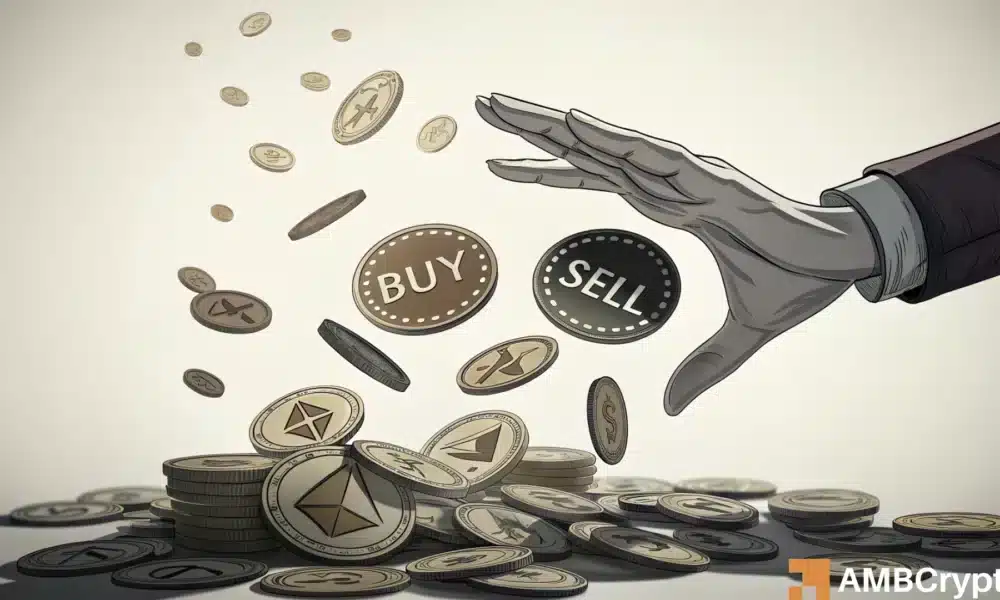Is Ethereum Consolidating or Capitulating? An In-Depth Analysis
Ethereum (ETH), the second-largest cryptocurrency by market capitalization, finds itself at a crucial inflection point. As it trades within a narrow range, hovering around significant resistance levels, on-chain data reveals a more complex narrative beneath the surface. Understanding whether Ethereum is consolidating or capitulating is pivotal for investors and traders alike. While recent metrics paint a picture of careful holding, several key factors are contributing to the resilience of Ethereum.
Current Market Dynamics
For nearly three weeks, Ethereum has been caught in a tight trading range without breaking through substantial resistance levels. Observing the weekly chart shows Ethereum lagging behind Bitcoin (BTC), reflecting smaller gains and more pronounced pullbacks. This relative underperformance may dampen investor sentiment and raise questions about the cryptocurrency’s short-term direction. Notably, the percentage of ETH supply in profit has plummeted from 99% to 80%, indicating that a more considerable portion of holders find themselves underwater. This shift could test the resolve of HODLers, leading to increased scrutiny among market participants.
Psychological Factors at Play
Tightening profit margins accompanied by diminishing momentum can create an environment ripe for market shakeouts. The Ethereum Buy/Sell Pressure Delta turning negative for the first time since Q2 hints at a potential shift in control towards sellers, raising the question of whether the $3,900 level can serve as a solid foundation. The psychological implications of these trends are significant, as both investor behavior and market sentiment play a crucial role in charting Ethereum’s path forward. The overarching uncertainty forces traders to consider if this phase represents a consolidation or early-stage capitulation.
The Role of Holder Conviction
The strength of Ethereum’s price floor is significantly influenced by the conviction of its investors. At an institutional level, momentum indicators have yet to reveal a definitive bottom, contributing to a general sense of volatility among investors. Furthermore, the outflow of capital from spot ETH ETFs—amounting to $81 million in just two days—reinforces the prevailing uncertain mood. However, it’s essential to recognize that approximately 200,000 ETH, equivalent to around $780 million, were withdrawn from exchanges recently. This trend points toward potential accumulation, as long-term holders (LTHs) appear to take decisive action.
Shrinking Exchange Reserves
In a broader context, the decline in Ethereum’s total exchange reserves—down by 4 billion, totaling 61 billion—highlights the tightening supply dynamics as more ETH is transitioned from exchange wallets to long-term holdings. This trend is crucial as it signifies that while some holders may be selling, a significant number are opting to hold onto their assets, bolstering the bullish undercurrents in the market. The absence of capitulation among underwater holders indicates a lingering sense of FOMO (Fear of Missing Out), which may help stabilize prices at current levels.
What This Means for Investors
In light of recent developments, it appears that Ethereum’s sideways trading pattern may represent base-building rather than inherent weakness. While it’s clear that some weaker hands are being shaken out, the steadfast conviction among HODLers remains a vital component of Ethereum’s on-chain structure. This resilience contributes to the bullish narrative surrounding ETH, rendering the recent 6.6% dip a potentially healthy correction rather than a signal of impending doom.
As we continue to witness market fluctuations, maintaining a long-term vision will be crucial. Whether in consolidation mode or experiencing early-stage capitulation, Ethereum’s robust on-chain metrics coupled with investor conviction suggest a resilient framework for the future.
Conclusion
In summary, the current state of Ethereum presents an intriguing tapestry of resistance levels, psychological tests for holders, and pivotal shifts in market dynamics. While some indicators may suggest potential capitulation, the deeper forces at play depict a narrative of resilience. Understanding these complexities will empower investors to navigate the Ethereum landscape more effectively, setting the stage for potential growth as the cryptocurrency ecosystem evolves. Whether you’re a seasoned investor or new to the space, keeping a close eye on Ethereum’s trials and tribulations may reveal significant opportunities ahead.
















